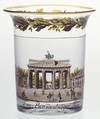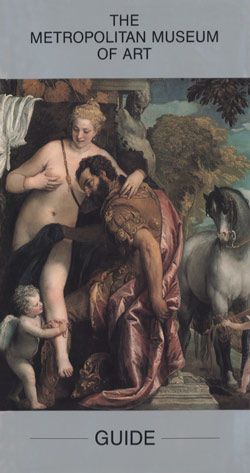The Brandenburg Gate
Enameler Carl von Scheidt German
This beaker painted with a view of the Brandenburg Gate, which closes the famous Unter den Linden allée in Berlin, is an example of the new medium of translucent enamels developed by a porcelain painter, Samuel Daniel Mohn (1762–1815) about 1805. He worked in Dresden, with a workshop of painters he had trained in the technique. Among his followers, who carried the art to Berlin and Vienna, were Gottlob Samuel Mohn, his son; Carl von Scheidt, who signed and dated this beaker and Anton Kothgasser. It was a cool, delicate medium, especially suitable for topographical views on small objects. However, Gottlob Samuel Mohn also executed stained-glass windows in the technique at the Imperial Palace at Laxenburg for Emperor Francis II of Austria.
This image cannot be enlarged, viewed at full screen, or downloaded.


